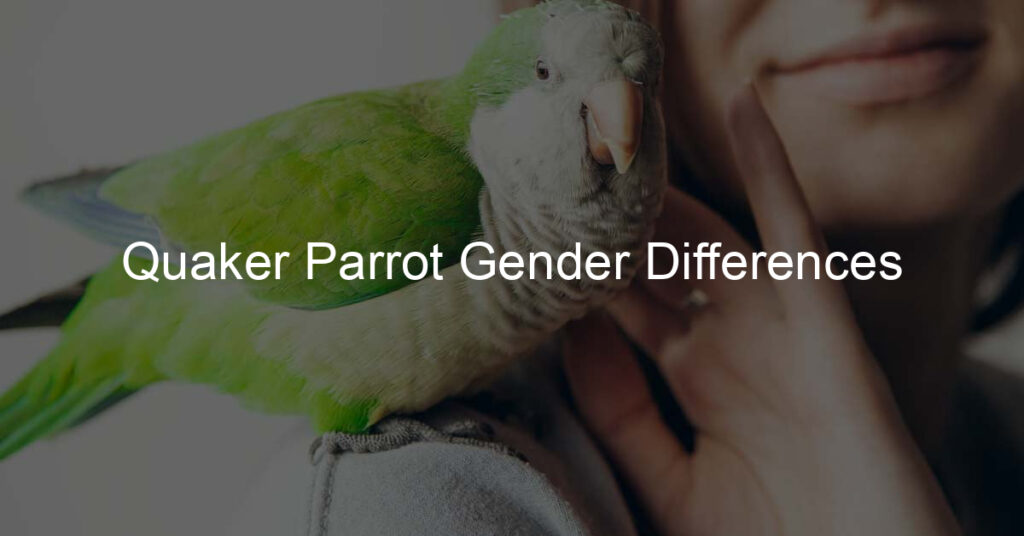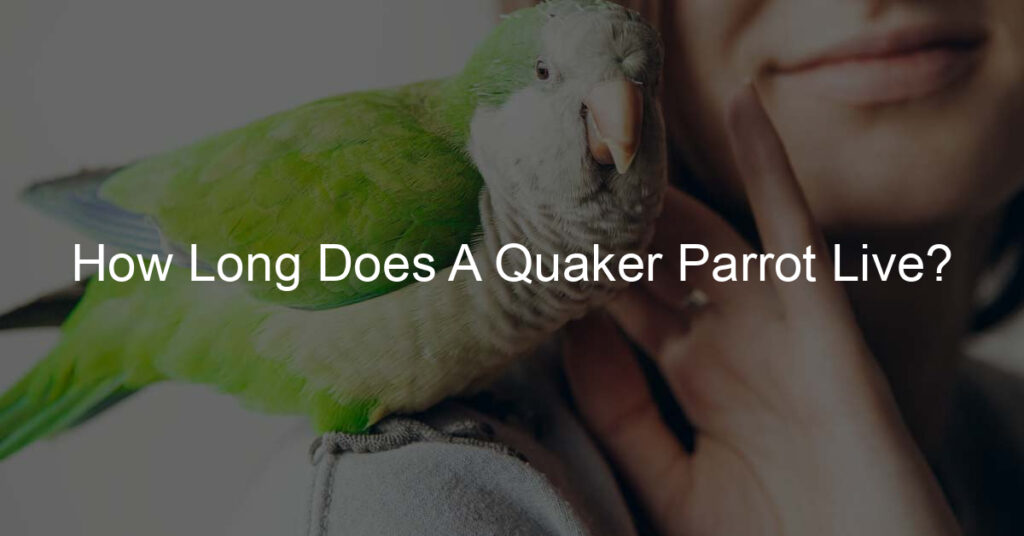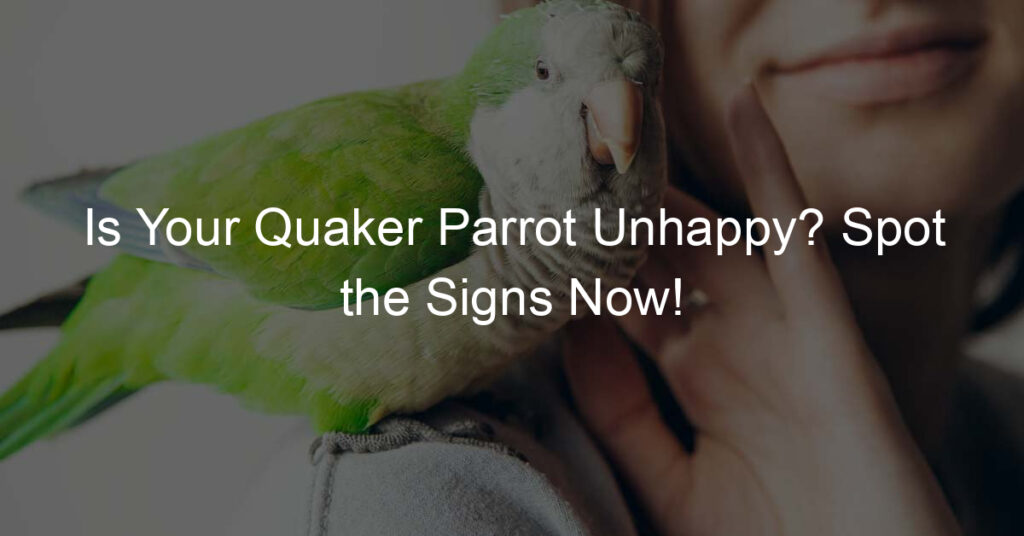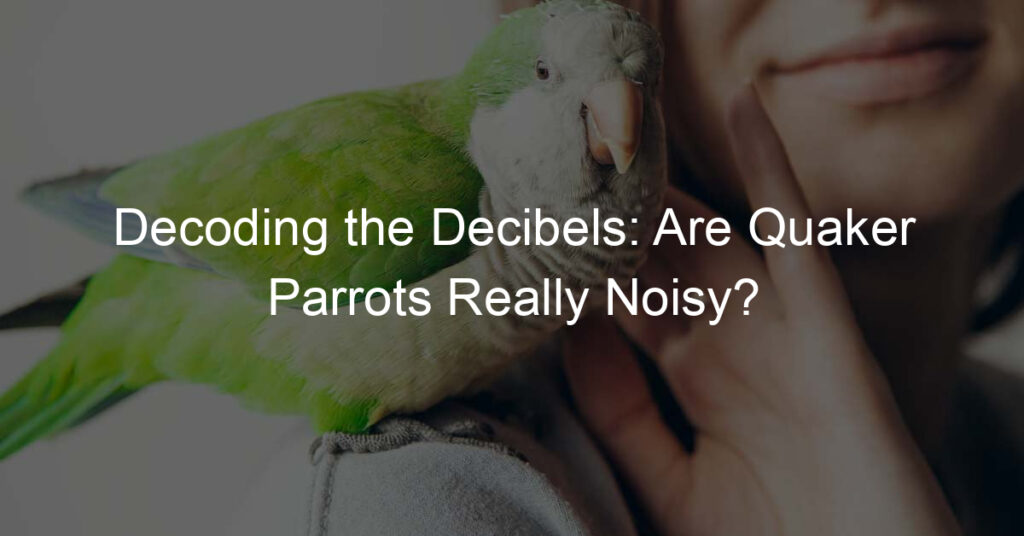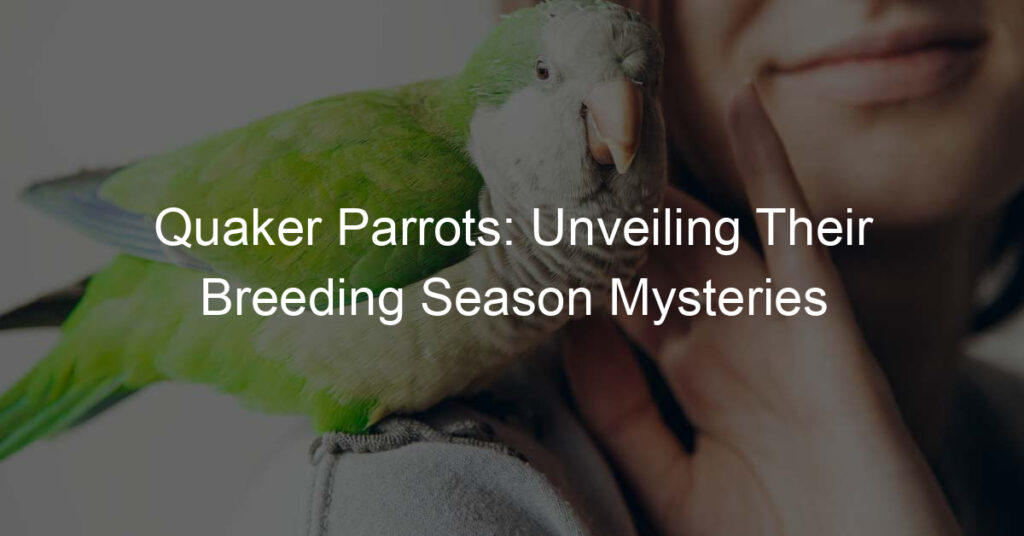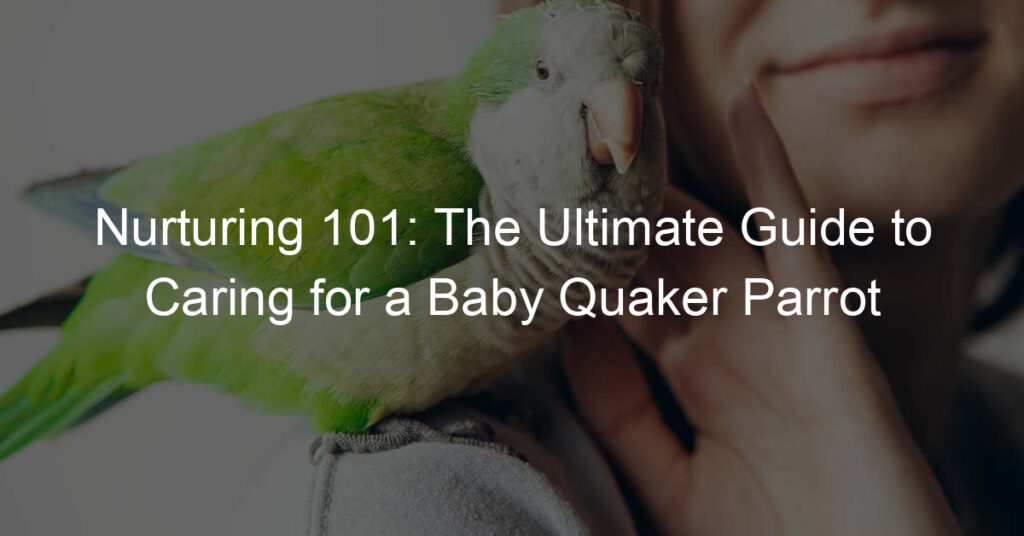There are some pretty big differences between male and female Quaker parrots. If you’re thinking about getting one of these little feathered friends, it’s important to know what you’re getting into.
Here’s a quick rundown of the main differences between the sexes.
How can you tell if a quaker parrot is a male or female?
If you’re wondering how to tell if a quaker parrot is a male or female, the only sure way to know is through DNA testing.
However, some visual cues can give you an indication. Generally speaking, males have brighter markings on their head and face than females and the eyes of males are usually darker in color.
Additionally, males tend to be more vocal with higher-pitched sounds compared to females who favor lower tones. Ultimately though, your best bet is still genetic testing so if you’re looking for certainty, it may be wise to consider this option.
When can you tell the gender of a parrot?
Determining the gender of a parrot can be tricky, especially for those who are inexperienced in all things feathered. Depending on the species, some birds can naturally change colors depending upon their gender; but you may need to give a closer look just to be sure.
Generally, males tend to be more vocal while females typically take on a more submissive role when it comes to their nesting behavior, which is a great distinguishing factor if you’re able to observe them in their natural environment.
Additionally, biology also plays an important role: males have more significant and brighter feathers and even longer tails, whereas female feathers are duller and shorter than their male counterparts.
So if you’re looking at purchasing a particular bird and would like to know what sex it is, consider these cues closely and you’ll be able to better distinguish whether these birds are rooming about with mates or potential sweethearts!
Do male or female quaker parrots build nests?
Quaker parrots, also known as monk parakeets, are known for their unique ability to build stick nests. Interestingly, both male and female quaker parrots participate in the construction of these durable structures.
While it may seem like a job that only strong males would undertake, it turns out that both sexes take an active role in gathering materials and constructing impressive abodes, which can reach up to two feet tall!
And, even more delightfully, once the nest is completed there is an opportunity for courtship that allows the two birds to bond together and hope for children of their own one day soon.
It’s quite a feat – to observe these two small birds working tirelessly together to construct their perfect home that embodies true love in its purest form!
Do female Quakers lay eggs?
The short answer to whether female Quakers lay eggs is no! Quakers are a species of parrot, and many people mistakenly believe them to be a type of bird that lays eggs.
Female Quakers can physically lay an egg but they usually do not because they rely on their mate during the breeding season.
Instead, they will clutch onto a toy or other object that they deem as an egg, essentially tricking the male into thinking she has laid her egg. Talk about smooth moves! Even though you may think female Quakers lay eggs, it’s ultimately not the case.
Can female quaker parrots talk?
Female quaker parrots, also known as monk parakeets, are renowned for their talking abilities and impressive vocabulary.
They can learn as many as fifty or even eighty words, depending on how long they’ve been exposed to them – sometimes, they can even string two-word sentences together. Although female parrots tend to be less vocal than male birds, they still can produce a wide range of sounds.
Furthermore, some females possess greater talking ability due to the influence of hormones; therefore, females vary in their speaking abilities much as people do.
Ultimately, these extraordinary birds demonstrate that anyone – regardless of gender – can use their voice if given the right opportunity!
Can female parrots lay eggs without a male?
It’s amazing to think that female parrots can lay eggs without any help from a male! This incredible ability is known as ‘uniparental reproduction’, where offspring develop through the female’s genetic material.
Although it isn’t fully understood, it appears that uniparental reproductive strategies evolved in several species of birds due to environmental factors such as food shortage and predation.
Because these birds did not have access to mates, they laid unfertilized eggs and the young were born from the mother. Impressive stuff!
Concluding Thoughts: Quaker Parrot Gender Differences
After researching Quaker Parrots, it’s clear that there are defined gender differences between male and female birds.
Although these differences may not always be obvious to a casual observer at first glance, there are some distinct physical and behavioral traits that each gender of bird possesses.
From the color of their feathers to their behavior around other birds, Quaker parrots’ males, and females are noticeably different.
That said, it’s still important to remember that all birds, regardless of gender, should be respected and cared for in the same way. Couples in particular can have a lot of fun observing and learning about the unique personalities of both genders.
Furthermore, understanding basic gender differences can go a long way in helping keepers interact with their feathered friends more successfully and create an environment that best suits their needs as a social species.
All in all, while it’s essential to appreciate the specific characteristics each parrot brings to our lives–male or female–the most important thing is always making sure our avian friends live long, happy, and healthy lives!

